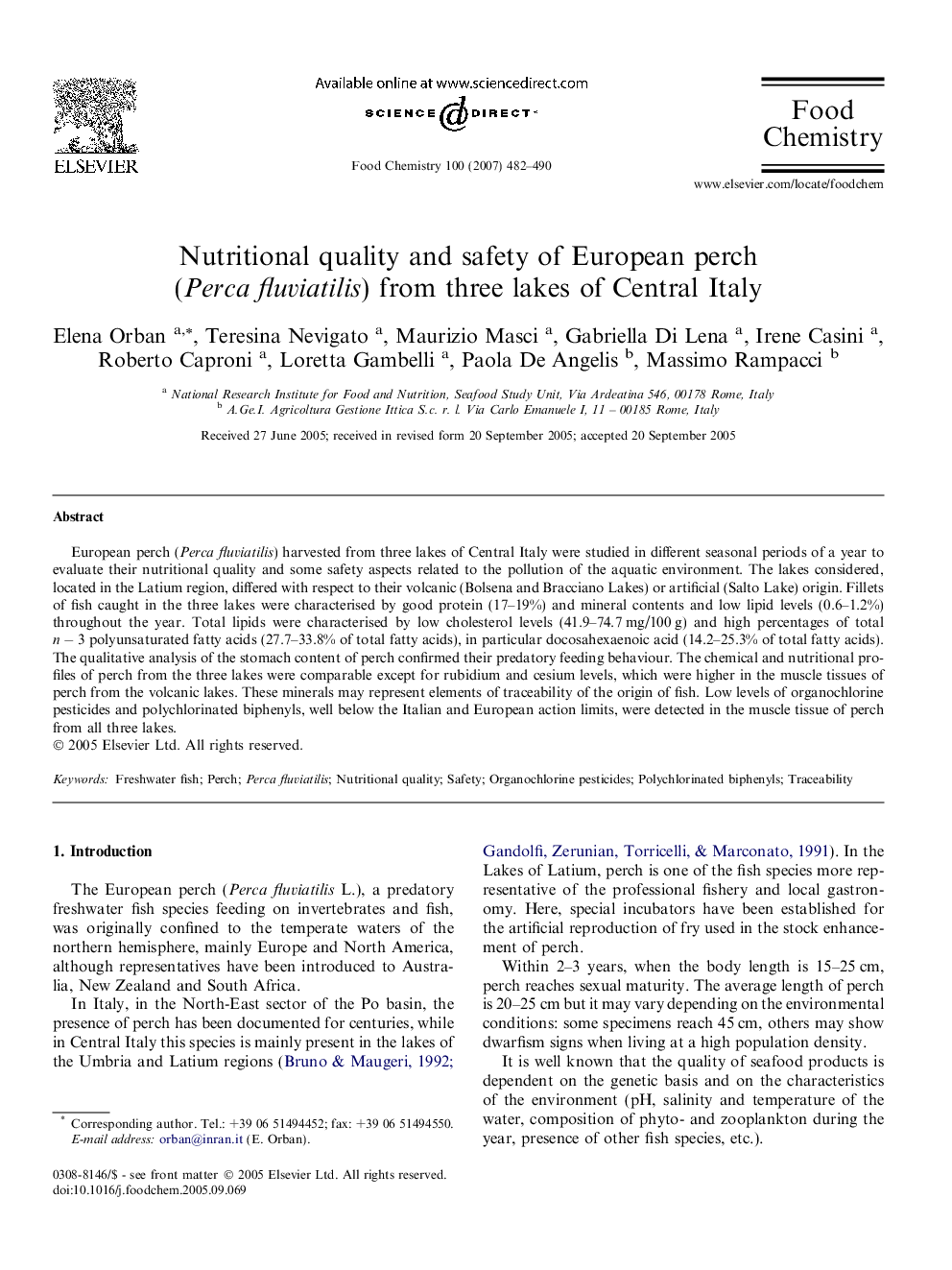| Article ID | Journal | Published Year | Pages | File Type |
|---|---|---|---|---|
| 1190703 | Food Chemistry | 2007 | 9 Pages |
European perch (Perca fluviatilis) harvested from three lakes of Central Italy were studied in different seasonal periods of a year to evaluate their nutritional quality and some safety aspects related to the pollution of the aquatic environment. The lakes considered, located in the Latium region, differed with respect to their volcanic (Bolsena and Bracciano Lakes) or artificial (Salto Lake) origin. Fillets of fish caught in the three lakes were characterised by good protein (17–19%) and mineral contents and low lipid levels (0.6–1.2%) throughout the year. Total lipids were characterised by low cholesterol levels (41.9–74.7 mg/100 g) and high percentages of total n − 3 polyunsaturated fatty acids (27.7–33.8% of total fatty acids), in particular docosahexaenoic acid (14.2–25.3% of total fatty acids). The qualitative analysis of the stomach content of perch confirmed their predatory feeding behaviour. The chemical and nutritional profiles of perch from the three lakes were comparable except for rubidium and cesium levels, which were higher in the muscle tissues of perch from the volcanic lakes. These minerals may represent elements of traceability of the origin of fish. Low levels of organochlorine pesticides and polychlorinated biphenyls, well below the Italian and European action limits, were detected in the muscle tissue of perch from all three lakes.
